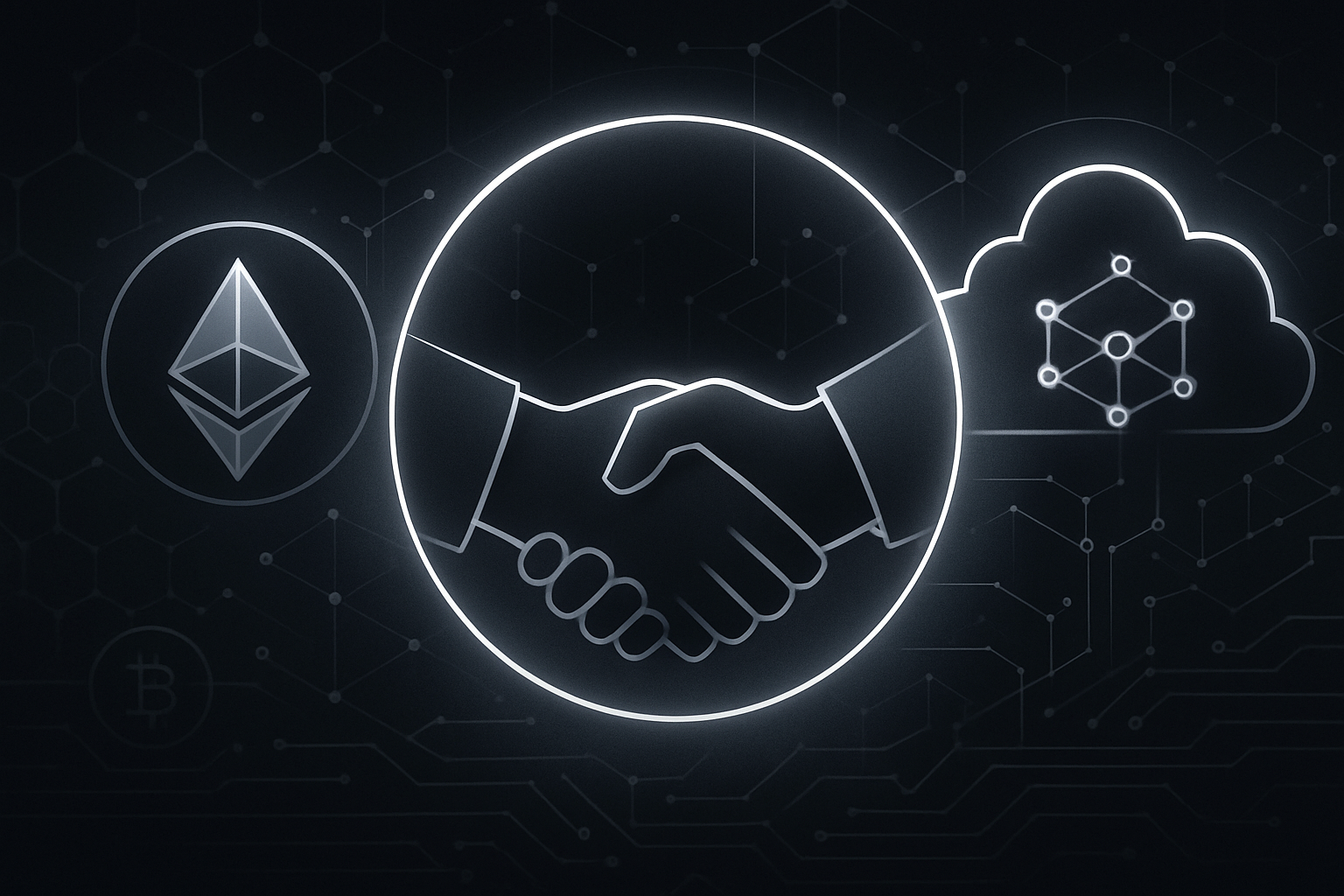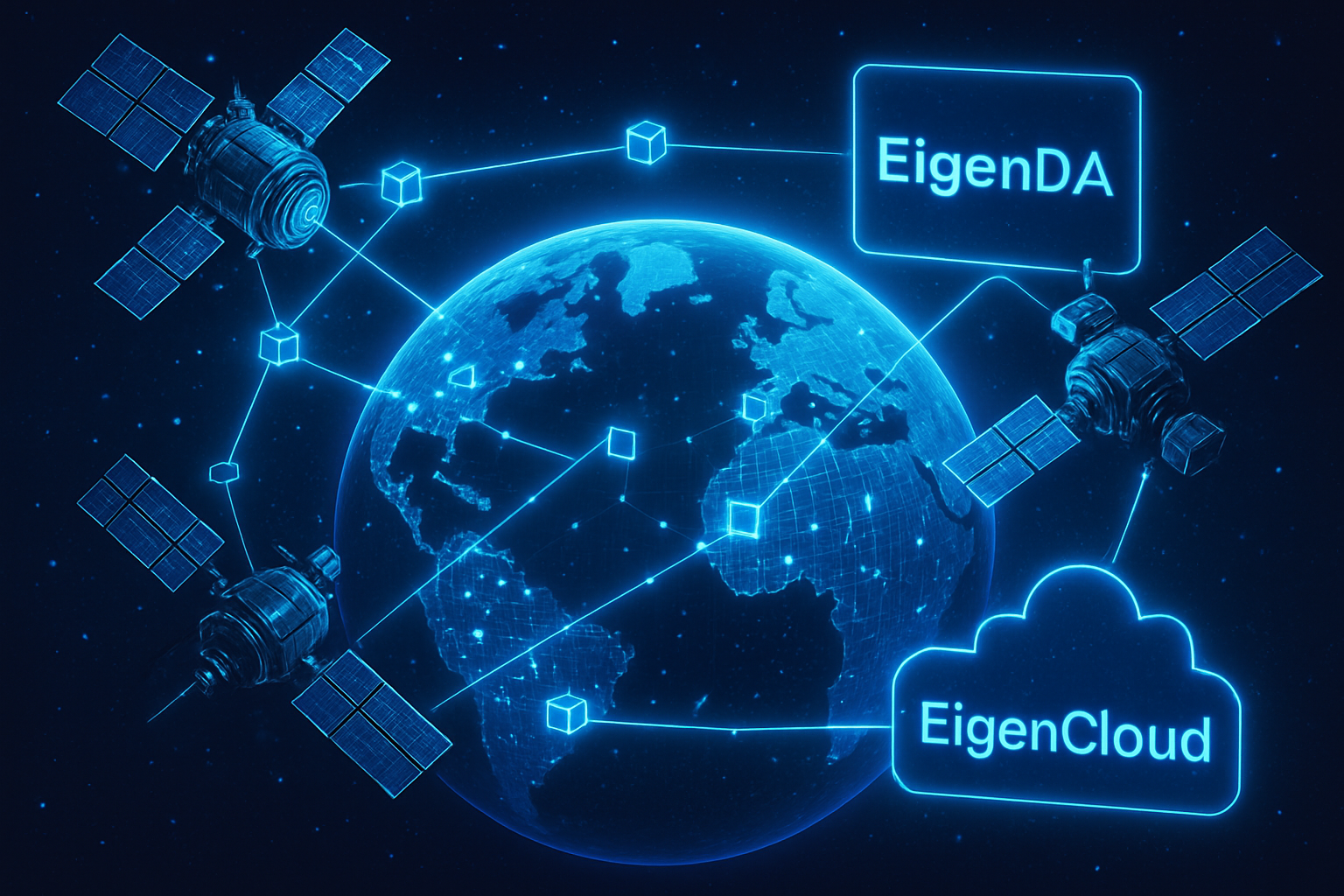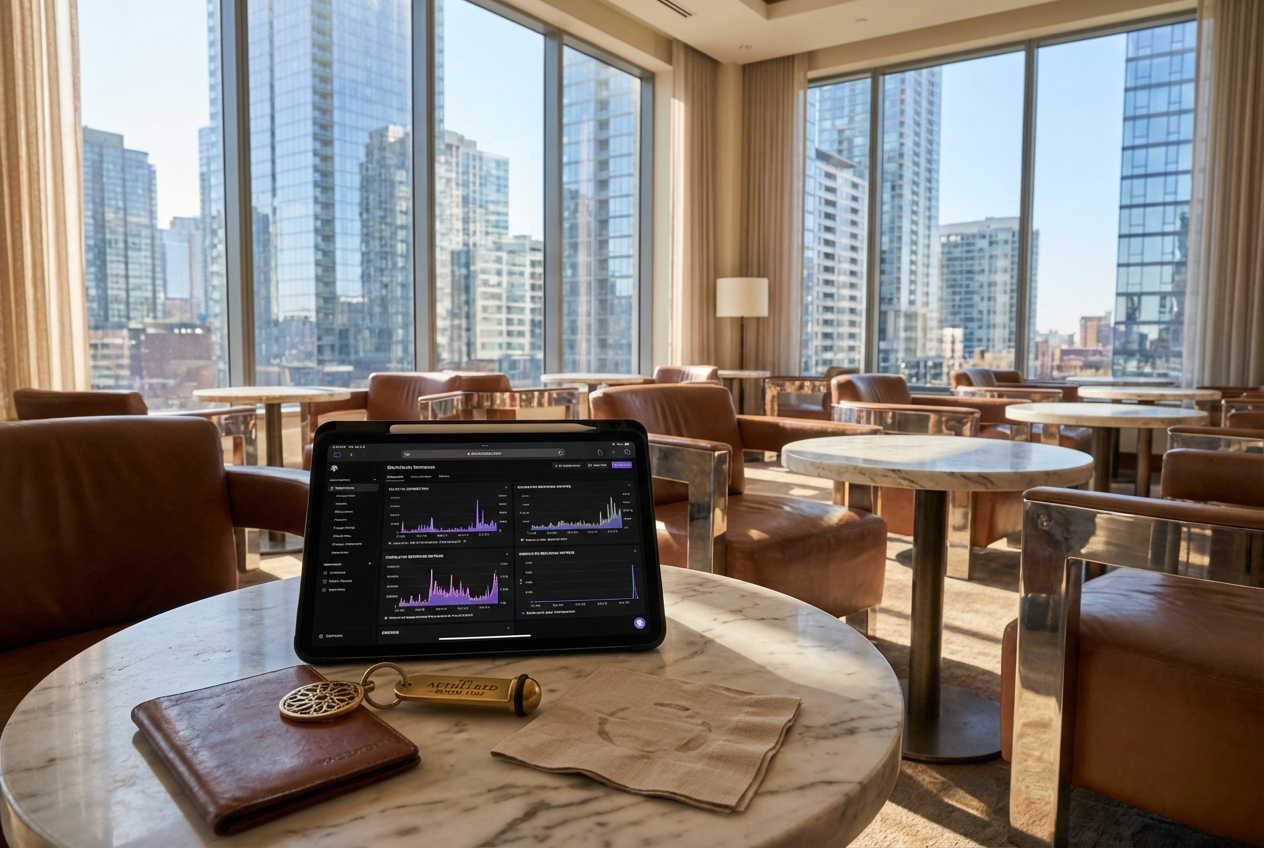
Blockchain is no longer just an Earth-bound innovation. With the rise of orbital infrastructure and hyperscale data availability layers, projects like SpaceComputer and EigenCloud are pushing the boundaries of what’s possible for decentralized applications. At the heart of this new frontier is EigenDA, a data availability protocol that’s not only transforming Ethereum Layer 2 rollups but also anchoring blockchain consensus in space.
What Makes EigenDA a Game Changer for Blockchain Data Availability?
The core challenge for any scalable blockchain system is ensuring that all participants can access the same data, reliably and verifiably. This is where data availability (DA) layers come into play. Historically, Ethereum’s Layer 1 has provided security but at the cost of high fees and limited throughput. Enter EigenDA, developed by EigenLabs and built on EigenLayer, which takes DA to a whole new level.
EigenDA V2, now live on mainnet and Sepolia testnet, introduces a suite of features that sets it apart in the crowded DA landscape:
- 100 MB/s throughput: That’s enough to handle more than 800,000 ERC-20 transfers or 80,000 token swaps every second – a scale that rivals traditional payment networks like Visa.
- Ultra-low latency: With an average end-to-end latency of just 5 seconds (a staggering 60x improvement over previous iterations), developers can finally build dApps with real-time responsiveness.
- Predictable costs: Offloading massive blobs of data from Ethereum L1 to EigenDA means rollups enjoy lower and more predictable fees – a critical factor as demand for on-chain activity explodes.
- Tight Ethereum integration: Security assumptions remain anchored to Ethereum itself, so rollup builders don’t have to compromise on trust or composability.
This leap in capability has not gone unnoticed. In August 2025, Caldera – a leading rollup infrastructure provider – announced its integration of EigenDA V2 into its stack via EigenCloud. The result? Rollups powered by Caldera now boast cloud-scale performance while retaining crypto-grade verifiability.
The Orbital Blockchain Revolution: SpaceComputer Meets EigenCloud
If you think hyperscale DA is impressive on Earth, imagine what happens when you bring it into orbit. That’s exactly what SpaceComputer is pioneering with its collaboration with EigenCloud and EigenLayer technologies.
Why put blockchain infrastructure in space?
- Sovereignty and resilience: By checkpointing blockchain states via orbital satellites, SpaceComputer ensures immutability even if terrestrial infrastructure is compromised or censored.
- Global accessibility: Satellite relays make it possible for users in remote or censored regions to access decentralized networks without relying on local ISPs or ground-based nodes.
- Tamper-proof consensus: Orbital consensus mechanisms add another layer of trust minimization by anchoring state changes outside any single jurisdiction’s control.
This synergy between hyperscale DA and orbital infrastructure unlocks new use cases: from AI-powered dApps with off-chain execution to trust-minimized global payment rails and even secure disaster recovery for critical blockchains. As SpaceComputer periodically records checkpoints from terrestrial chains into its orbital network using EigenDA as the anchor DA layer, we’re witnessing the dawn of truly interplanetary crypto systems.
The New Standard: How Restaking Powers Data Availability in Space
The engine behind all this isn’t just raw bandwidth or clever cryptography – it’s restaking economics. With protocols like EigenLayer enabling restaking across multiple services (including DA), operators can earn yield while providing meaningful security guarantees across both traditional rollups and next-gen orbital networks.
This model incentivizes robust participation by aligning economic rewards directly with useful work: storing verifiable blobs at scale, serving low-latency proofs globally, and maintaining uptime even under adverse conditions (like solar storms or terrestrial blackouts). The result? An ecosystem where both Earth-based execution environments and orbital consensus layers benefit from shared security without sacrificing efficiency or cost predictability.
Ethereum (ETH) Price Prediction 2026-2031
Comprehensive projections factoring EigenDA-driven scalability, market cycles, and adoption trends. All prices in USD.
| Year | Minimum Price | Average Price | Maximum Price | Year-over-Year % Change (Avg) | Key Scenario |
|---|---|---|---|---|---|
| 2026 | $3,850 | $4,800 | $6,250 | +16.4% | EigenDA adoption drives Layer 2 expansion, ETH consolidates above $4,000 |
| 2027 | $4,100 | $5,900 | $8,000 | +22.9% | Major rollup migration to EigenDA, increased institutional DeFi interest |
| 2028 | $4,500 | $7,200 | $10,500 | +22.0% | Regulatory clarity, AI/blockchain convergence, ETH as DA leader |
| 2029 | $5,200 | $8,700 | $13,200 | +20.8% | Mainstream dApp growth, ETH supply reduction from staking |
| 2030 | $5,800 | $10,100 | $15,900 | +16.1% | Global DA standards, competing with Celestia, robust on-chain economies |
| 2031 | $6,300 | $11,900 | $19,000 | +17.8% | ETH solidifies position as core DA and smart contract platform |
Price Prediction Summary
Ethereum’s price outlook is strongly positive through 2031, with EigenDA and modular data availability solutions fueling a new era of scalability and adoption. ETH is expected to see steady appreciation, with average prices rising from $4,800 in 2026 to $11,900 in 2031, driven by increased rollup activity, institutional participation, and robust technological advancements. Minimum price scenarios consider potential bear markets or regulatory headwinds, while maximum projections reflect bullish adoption and network effects.
Key Factors Affecting Ethereum Price
- Adoption and integration of EigenDA and other modular DA solutions
- Rollup scalability and migration trends (Caldera, etc.)
- Regulatory developments in major economies
- Ethereum’s continued dominance as a smart contract and data availability platform
- Competition from alternative DA/chains (e.g., Celestia, Avail)
- Macroeconomic factors (interest rates, global risk appetite)
- Supply dynamics (staking, EIP-1559 burn, LST adoption)
- Institutional and enterprise adoption of Ethereum Layer 2 and rollups
Disclaimer: Cryptocurrency price predictions are speculative and based on current market analysis.
Actual prices may vary significantly due to market volatility, regulatory changes, and other factors.
Always do your own research before making investment decisions.
As the lines blur between terrestrial and orbital blockchain infrastructure, EigenDA’s modular approach is quickly becoming the backbone for a new generation of decentralized applications and services. With its unrivaled throughput and ultra-low latency, EigenDA V2 isn’t just solving old problems, it’s redefining what’s possible for data availability in both familiar and uncharted environments.
The partnership between Caldera and EigenCloud is a prime example of how quickly the ecosystem is adapting. By integrating EigenDA V2, Caldera rollups can handle massive transaction loads, think 800,000 ERC-20 transfers per second, without bottlenecks or unpredictable costs. This scale is essential for supporting everything from high-frequency trading protocols to AI-powered dApps that require real-time data feeds.

But it’s the orbital dimension that truly sets this movement apart. SpaceComputer leverages EigenDA to checkpoint blockchain states in orbit, providing an immutable record that’s resilient to terrestrial outages or censorship attempts. For developers and users alike, this means greater confidence in the continuity and verifiability of their applications, even in the face of global disruptions.
The Restaking Flywheel: Security, Yield, and Global Reach
Restaking isn’t just a technical innovation; it’s an economic engine powering this whole ecosystem. By allowing staked assets to secure multiple layers, execution, DA, even orbital consensus, EigenLayer creates a flywheel effect:
- Operators earn yield by providing critical infrastructure services (storage, verification) across both Earth-based and space-based networks.
- Networks gain resilience through shared security assumptions and diversified validator participation.
- dApps benefit from lower costs and higher performance as more operators compete to provide efficient DA solutions.
This model aligns incentives at every layer of the stack. Whether you’re running a validator node on Earth or participating in an orbital checkpointing network via SpaceComputer, you’re rewarded for contributing genuine utility, not just locking up tokens.
Pushing Boundaries: What Comes Next for Orbital Blockchain Data Availability?
The integration of hyperscale DA with satellite infrastructure opens doors to entirely new use cases:
- Disaster-proof blockchains: Orbital checkpoints ensure critical state persists even if ground networks are compromised during natural disasters or geopolitical events.
- Censorship resistance at scale: Users in restricted regions can access tamper-proof ledgers without relying on local ISPs or government-controlled gateways.
- AI-powered dApps with global reach: Modular services like off-chain execution and inference become available anywhere there’s a satellite signal, and always anchored by verifiable DA.
This isn’t science fiction; it’s already rolling out as we speak. The combination of EigenDA’s throughput with SpaceComputer’s orbital consensus means that modular blockchains are no longer bound by geography, or even by atmosphere.
If you’re building in Web3 today, these advances aren’t just technical milestones, they’re invitations to reimagine what your application could be when freed from legacy constraints. Whether you’re optimizing for yield through restaking or architecting resilient systems for tomorrow’s global users, understanding how protocols like EigenDA fit into the broader DA landscape is now essential.
With Ethereum trading at $4,125.28, momentum behind these innovations shows no sign of slowing down. As more rollups migrate to hyperscale DA solutions like EigenDA V2, and as orbital infrastructure becomes part of the standard stack, the future of decentralized applications looks brighter (and more borderless) than ever before.






